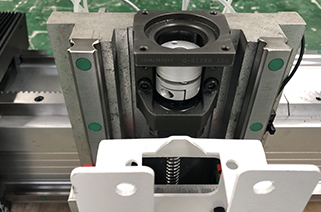
The quality of the sheet metal fiber laser cutting machine is affected by various factors. In order to obtain the ideal cutting quality, each cutting parameter is limited to a narrow range. At present, we can only rely on repeated experiments to find reasonable cutting parameters under different conditions. Time-consuming and laborious, and unable to respond to disturbance factors in the cutting process. How to quickly find the optimal cutting parameters under different cutting conditions and keep them stable during the cutting process is particularly important. Therefore, it is necessary to study on-line inspection and real-time control of laser cutting quality.
The most important indicator of high-quality laser cutting is that there is no cutting defect and the cutting surface roughness value is small. Therefore, the target of real-time inspection should be able to identify cutting defects and detect the information reflecting the roughness of the cutting surface. Among them, the roughness information is the most It is important and the most difficult.
In the detection of the roughness of the cutting surface, an important research result is to find that the main frequency of the pulsation spectrum of the optical radiation signal at the cutting front is equal to the frequency of the cutting fringe of the cutting surface, and the frequency of the cutting fringe is related to the roughness, so that the photoelectric tube detects The radiation signal is related to the roughness of the cut surface. The characteristic of this method is that the detection equipment and signal processing system are relatively simple, and the detection and processing speed is fast. However, the disadvantages of this method are:
Further research shows that the consistency of the main frequency of the optical radiation signal at the cutting front and the fringe frequency on the cutting surface is limited to the range of smaller cutting speeds. When the cutting speed is greater than a certain cutting speed, the main frequency of the signal disappears, and the upper training is no longer found. Any information related to cutting stripes.
Therefore, only relying on the light radiation intensity signal of the cutting front has great limitations, and it is difficult to obtain valuable information on the surface roughness of the cutting machine at a normal cutting speed, especially the information of the roughness near the lower edge. Using the visual sensor to monitor the cutting edge and spark shower images at the same time can obtain more comprehensive and abundant information about cutting defects and cutting surface roughness. In particular, the shower of sparks ejected from the lower end of the slit has a close relationship with the quality of the lower edge of the cutting surface, and is an important information source for obtaining the roughness of the lower edge of the cutting surface.
The extracted spectrum and main frequency of the optical radiation signal at the front of the fiber laser cutting machine cnc are only related to the cutting stripes on the upper part of the cutting surface, and do not reflect the cutting stripes on the lower part, and the most valuable information is not mentioned. Because generally the cutting surface is divided into upper and lower parts, the upper cutting stripes are neat, fine, and the roughness is small; the lower cutting stripes are disordered, the roughness is large, and the closer the lower edge is, the rougher it is, and the roughness reaches the maximum value near the lower edge. The detection signal only reflects the condition of the best quality area, not the lower quality, and the worst quality information near the lower edge. It is unreasonable and unreliable to use it as the basis for cutting quality evaluation and control.
Post time: Aug-04-2020







